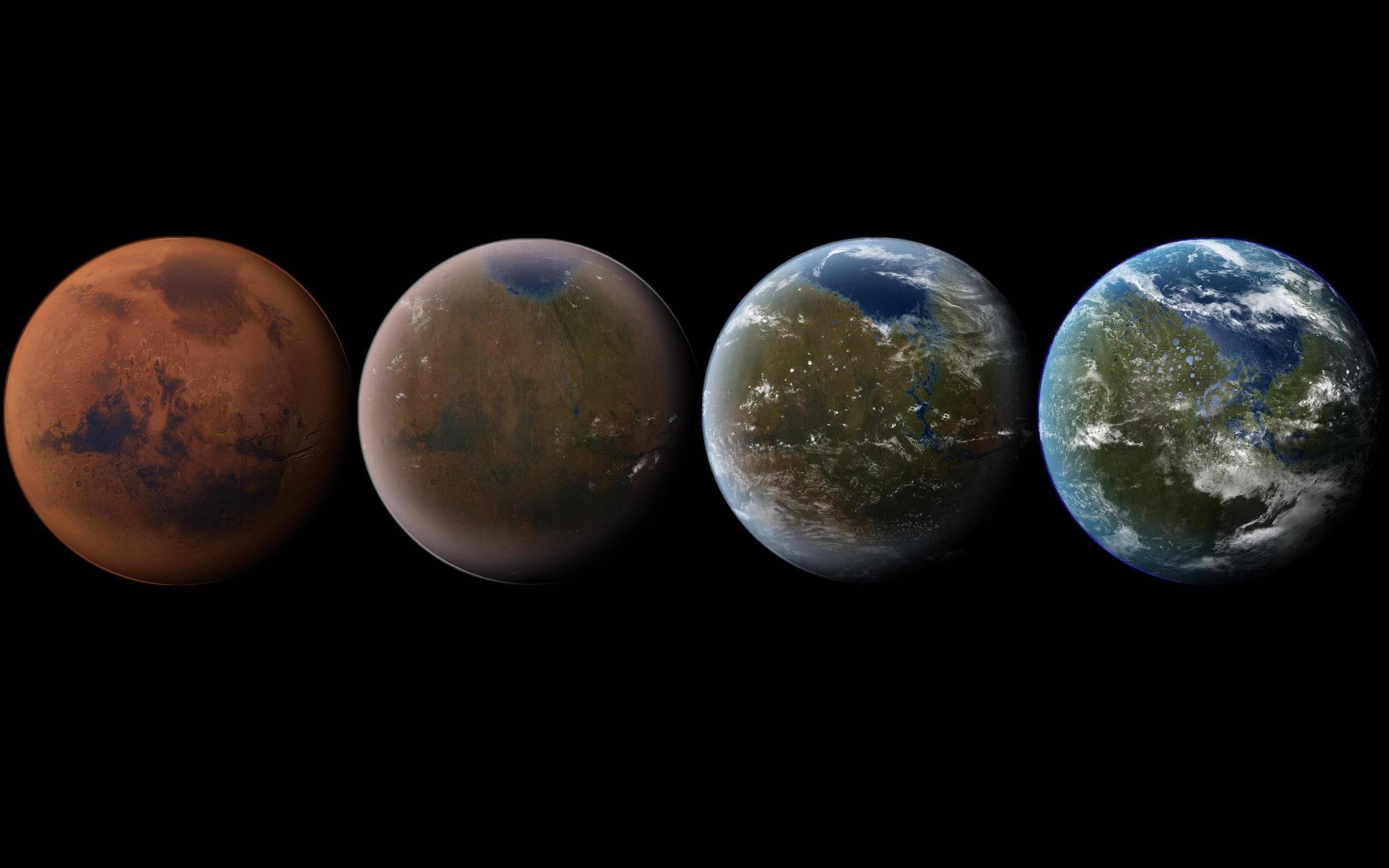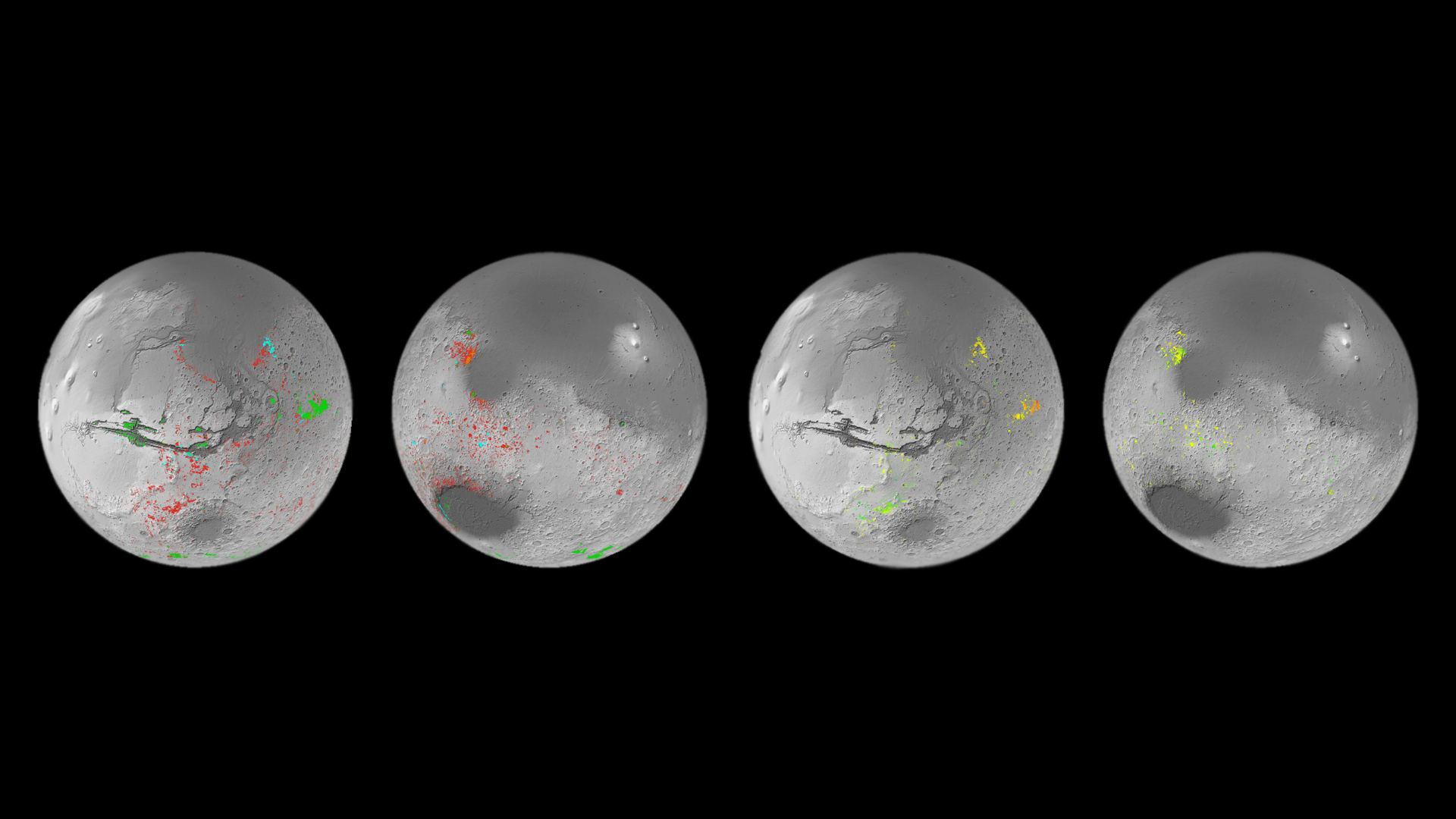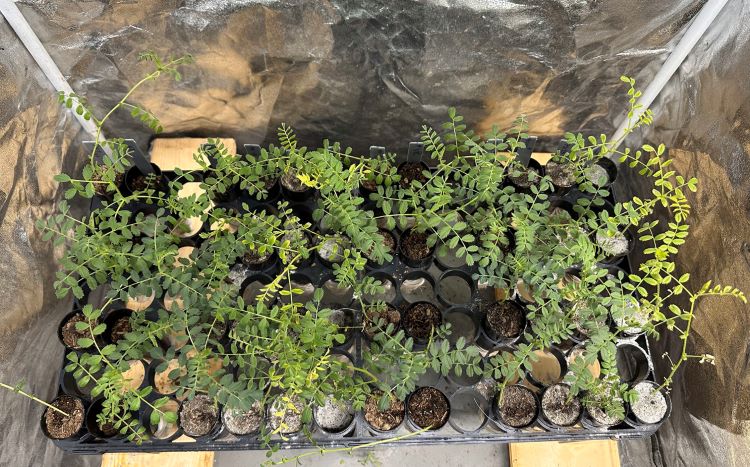Cracking the chicken-and-egg problem of utilizing resources in space has been a difficult challenge for over half a century. Getting enough infrastructure built up is necessary to collect those resources effectively, but doing so is too expensive without using the resources themselves. Trying to crack that problem has been the focus of a variety of space exploration enthusiasts, and one of them, Don Barker, is currently the Gateway HALO Utilization & Visiting Vehicle Integration Lead at ARES Corporation. He published a paper in 2020 that detailed how the space exploration industry could use a modified version of a framework from the oil and gas industry, which he calls the Planetary Resource Management System (PRMS), to calculate where we should focus on settlement efforts.
Continue reading “Using an Oil Industry Framework to Map Space Resources”An AI Chemist Made A Catalyst to Make Oxygen On Mars Using Local Materials
Breaking oxygen out of a water molecule is a relatively simple process, at least chemically. Even so, it does require components, one of the most important of which is a catalyst. Catalysts enable reactions and are linearly scalable, so if you want more reactions quickly, you need a bigger catalyst. In space exploration, bigger means heavier, which translates into more expensive. So, when humanity is looking for a catalyst to split water into oxygen and hydrogen on Mars, creating one from local Martian materials would be worthwhile. That is precisely what a team from Hefei, China, did by using what they called an “AI Chemist.”
Continue reading “An AI Chemist Made A Catalyst to Make Oxygen On Mars Using Local Materials”What Type of Excavator Is Most Suitable for Asteroids?
Digging in the ground is so commonplace on Earth that we hardly ever think of it as hard. But doing so in space is an entirely different proposition. On some larger worlds, like the Moon or Mars, it would be broadly similar to how digging is done on Earth. But their “milligravity” would make the digging experience quite different on the millions of asteroids in our solar system. Given the potential economic impact of asteroid mining, there have been plenty of suggested methods on how to dig on an asteroid, and a team from the University of Arizona recently published the latest in a series of papers about using a customized bucket wheel to do so.
Continue reading “What Type of Excavator Is Most Suitable for Asteroids?”Chinese Researchers Devise New Strategy for Producing Water on the Moon

In the coming years, China and Roscosmos plan to create the International Lunar Research PStation (ILRSP), a permanent base in the Moon’s southern polar region. Construction of the base will begin with the delivery of the first surface elements by 2030 and is expected to last until about 2040. This base will rival NASA’s Artemis Program, which will include the creation of the Lunar Gateway in orbit around the Moon and the various surface elements that make up the Artemis Base Camp. In addition to the cost of building these facilities, there are many considerable challenges that need to be addressed first.
Crews operating on the lunar surface for extended periods will require regular shipments of supplies. Unlike the International Space Station, which can be resupplied in a matter of hours, sending resupply spacecraft to the Moon will take about three days. As a result, NASA, China, and other space agencies are developing methods to harvest resources directly from the lunar environment – a process known as In-Situ Resource Utilization (ISRU). In a recent paper, a research team with the Chinese Academy of Sciences (CAS) announced a new method for producing massive amounts of water through a reaction between lunar regolith and endogenous hydrogen.
Continue reading “Chinese Researchers Devise New Strategy for Producing Water on the Moon”New Study Shows Mars Could be Terraformed Using Resources that are Already There

The idea of terraforming Mars, making its atmosphere and environment more Earth-like for human settlement, goes back decades. During that time, many proposed methods have been considered and put aside as “too expensive” or requiring technology well in advance of what we have today. Nevertheless, the idea has persisted and is often considered a part of long-term plans for establishing a human presence on Mars. Given the many plans to establish human outposts on the Moon and then use that infrastructure to send missions to Mars, opportunities for terraforming may be closer than we think.
Unfortunately, any plans for terraforming Mars suffer from unresolved hurdles, not the least of which are the expense, distance, and the need for technologies that don’t currently exist. Triggering a greenhouse effect and warming the surface of Mars would take massive amounts of greenhouse gases, which would be very difficult and expensive to transport. However, a team of engineers and geophysicists led by the University of Chicago proposed a new method for terraforming Mars with nanoparticles. This method would take advantage of resources already present on the Martian surface and, according to their feasibility study, would be enough to start the terraforming process.
Continue reading “New Study Shows Mars Could be Terraformed Using Resources that are Already There”Resources on Mars Could Support Human Explorers

In the coming decades, multiple space agencies and private companies plan to establish outposts on the Moon and Mars. These outposts will allow for long-duration stays, astrobiological research, and facilitate future Solar System exploration. However, having crews operating far from Earth for extended periods will also present some serious logistical challenges. Given the distances and costs involved, sending resupply missions will be both impractical and expensive. For this reason, relying on local resources to meet mission needs – aka. In-Situ Resource Utilization (ISRU) – is the name of the game.
The need for ISRU is especially important on Mars as resupply missions could take 6 to 9 months to get there. Luckily, Mars has abundant resources that can be harvested and used to provide everything from oxygen, propellant, water, soil for growing food, and building materials. In a recent study, a Freie Universität Berlin-led team evaluated the potential of harvesting resources from several previously identified deposits of hydrated minerals on the surface of Mars. They also presented estimates of how much water and minerals can be retrieved and how they may be used.
Continue reading “Resources on Mars Could Support Human Explorers”Making Rocket Fuel Out of Lunar Regolith

In the coming years, NASA and other space agencies plan to extend the reach of human exploration. This will include creating infrastructure on the Moon that will allow for crewed missions on a regular basis. This infrastructure will allow NASA and its international partners to make the next great leap by sending crewed missions to Mars (by 2039 at the earliest). Having missions operate this far from Earth for extended periods means that opportunities for resupply will be few and far between. As a result, crews will need to rely on In-Situ Resource Utilization (ISRU), where local resources are leveraged to provide for basic needs.
In addition to air, water, and building materials, the ability to create propellant from local resources is essential. According to current mission architectures, this would consist of harvesting water ice in the polar regions and breaking it down to create liquid oxygen (LOX) and liquid hydrogen (LH2). However, according to a new study led by engineers from McGill University, rocket propellant could be fashioned from lunar regolith as well. Their findings could present new opportunities for future missions to the Moon, which would no longer be restricted to the polar regions.
Continue reading “Making Rocket Fuel Out of Lunar Regolith”How Much Water Would a Self-Sustaining Moonbase Need?
As humanity returns to the Moon in the next few years, they’re going to need water to survive. While resupplies from Earth would work for a time, eventually the lunar base would have to become self-sustaining? So, how much water would be required to make this happen? This is what a recently submitted study hopes to address as a team of researchers from Baylor University explored water management scenarios for a self-sustaining moonbase, including the appropriate location of the base and how the water would be extracted and treated for safe consumption using appropriate personnel.
Continue reading “How Much Water Would a Self-Sustaining Moonbase Need?”Engineers Design Habitats for the Moon Inspired by Terminite Mounds
Through the Artemis Program, NASA intends to send astronauts back to the Moon for the first time since the Apollo Era. But this time, they intend to stay and establish a lunar base and other infrastructure by the end of the decade that will allow for a “sustained program of lunar exploration and development.” To accomplish this, NASA is enlisting the help of fellow space agencies, commercial partners, and academic institutions to create the necessary mission elements – these range from the launch systems, spacecraft, and human landing systems to the delivery of payloads.
With NASA funding, a team of engineers from the University of Arizona College of Engineering (UA-CE) is developing autonomous robot networks to build sandbag shelters for NASA astronauts on the Moon. The designs are inspired by cathedral termite mounds, which are native to Africa and northern Australia’s desert regions. Their work was the subject of a paper presented at the American Astronautical Society Guidance, Navigation, and Control (AAS GNC) Conference, which took place from February 1st to 7th in Littleton and Breckinridge, Colorado.
Continue reading “Engineers Design Habitats for the Moon Inspired by Terminite Mounds”Chickpeas Grown in Lunar Regolith Are Stressed but Reach Maturity

A recent preprint investigates how chickpeas have been successfully grown in lunar regolith simulants (LRS), marking the first time such a guideline has been established not only for chickpeas, but also for growing food for long-term human space missions. This study was conducted by researchers from Texas A&M University and Brown University and holds the potential to develop more efficient methods in growing foods using extraterrestrial resources, specifically with NASA’s Artemis program slated to return humans to the lunar surface in the next few years.
Continue reading “Chickpeas Grown in Lunar Regolith Are Stressed but Reach Maturity”




